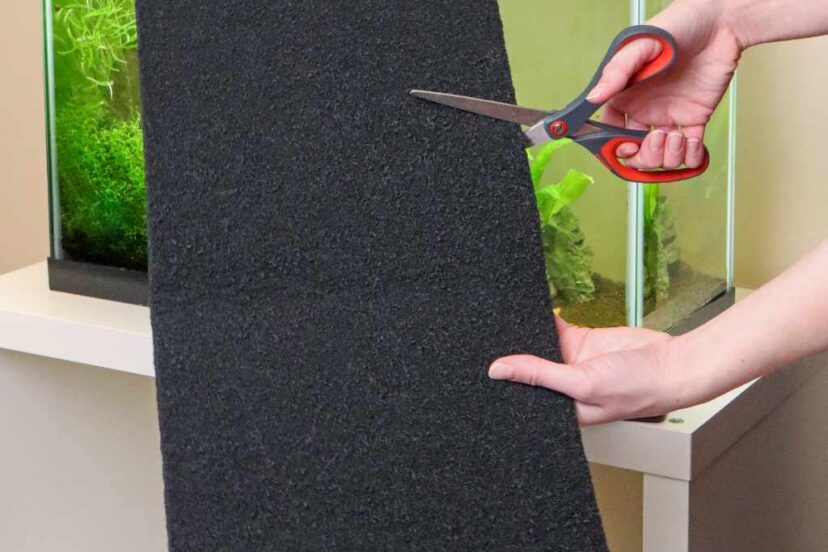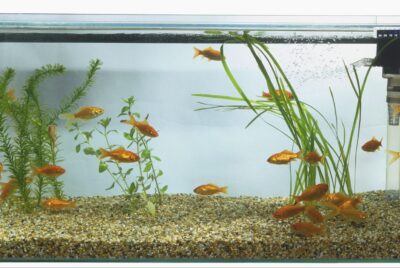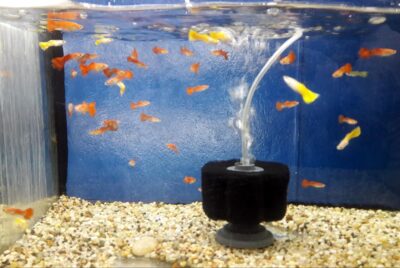How Often to Change Aquarium Filter Pads?
Do you know how often to change aquarium filter pads? It’s a crucial question that we, as fish enthusiasts and caregivers, must know the answer to. But don’t worry, we’ll delve into this together.
The Importance of Regular Aquarium Maintenance
Let’s dive a bit deeper into why regular aquarium maintenance is so pivotal to the wellbeing of our aquatic friends. Like any living space, an aquarium is not a static environment, but a vibrant, dynamic ecosystem that is constantly changing.
Balancing the Ecosystem – (How Often to Change Aquarium Filter Pads)
A well-maintained aquarium is a balanced ecosystem where multiple elements coexist harmoniously. From the pH of the water to the temperature, from the levels of ammonia, nitrite, and nitrate, to the balance between fish, plants, and beneficial bacteria – everything must work in synchrony to create a healthy environment for your fish. Regular maintenance ensures that this balance is preserved and any deviations are swiftly corrected.
Maintaining Water Quality – (How Often to Change Aquarium Filter Pads)
The quality of water in your aquarium is a lifeline for its inhabitants. Over time, fish waste, leftover food, decaying plant matter, and other organic materials break down in the water, leading to the accumulation of harmful substances, including ammonia, nitrites, and nitrates. Regular water changes, which are an integral part of aquarium maintenance, help keep these potential toxins at safe levels.
Ensuring Equipment Functionality – (How Often to Change Aquarium Filter Pads)
Your aquarium’s equipment – such as the filter, heater, and lights – are all essential for maintaining the optimal living conditions for your fish. Over time, these devices can become less efficient or even break down. Regular maintenance ensures that any potential issues are caught early and rectified, thereby avoiding any sudden, harmful changes to the tank’s environment.
Disease Prevention – (How Often to Change Aquarium Filter Pads)
Poorly maintained tanks can easily become breeding grounds for various pathogens and parasites. Regular cleaning and water testing can help detect the early signs of disease and allow for prompt treatment. Healthy water conditions and a stress-free environment significantly reduce the likelihood of disease outbreaks in the first place.
Aesthetic Appeal – (How Often to Change Aquarium Filter Pads)
Apart from the essential health reasons, let’s not forget the visual appeal of a clean, well-maintained aquarium. Algae overgrowth, murky water, and ill-looking fish do not make for a beautiful display. Regular maintenance keeps your aquarium looking its best, ensuring it remains a centerpiece in your home decor that you can be proud of.
Aquarium Filter Pads: A Crucial Part of Your Tank
Have you ever pondered over the functionality of the seemingly trivial filter pad inside your aquarium? You’d be surprised by the significant role it plays in the entire ecosystem of your aquarium!
The Purpose of Aquarium Filter Pads
Aquarium filter pads act as the primary line of defense against pollutants, waste, and harmful chemicals in your aquarium water. They help maintain water clarity and overall health of the tank’s inhabitants.
How Often Should You Change Your Aquarium Filter Pads?
Now comes the question we’ve all been waiting for. How often should one change these filter pads? The answer is – it depends. Yes, you heard that right. There isn’t a one-size-fits-all answer as several factors come into play.
Factors Influencing Frequency
Several factors dictate how often you should change your aquarium filter pads. Here are a few to consider:
Aquarium Size and Occupants
The bigger your aquarium or the more fish it houses, the quicker the filter pads will get dirty. More fish mean more waste, hence, more frequent changes.
Type of Filter Pad
Different filter pads have different lifespans. Some require changing every couple of weeks, while others might last for several months. Always refer to the manufacturer’s instructions.
Quality of Water
If the water quality in your area isn’t the best, you might need to change the filter pads more often. Poor water quality can quickly clog the filter pads.
Recognizing When to Change Your Filter Pad
It’s essential to monitor the water quality regularly. If you notice a decline in water clarity or a foul smell, it might be time to change the filter pad.
Consequences of Neglecting to Change Filter Pads
Neglecting to change your filter pads can lead to numerous problems, such as algae blooms, foul odors, and even sick fish. The poor water quality resulting from a clogged filter pad is a significant threat to your fish’s health.
Tips for Changing Aquarium Filter Pads
Great, let’s delve into some practical advice on changing aquarium filter pads. It’s not a complex task, but following a few best practices can ensure the job is done efficiently and safely for your fish.
Choosing the Right Filter Pad
Not all filter pads are created equal, and choosing the right one is a crucial step. The best filter pad for your aquarium will depend on several factors:
- The type of filter your aquarium uses. Different filters use different filter media, and you should ensure you’re getting the correct size and type for your specific filter.
- The size and bioload of your aquarium. Larger tanks or tanks with many fish might require higher grade filter pads.
- The specific needs of your tank. If you’re dealing with a specific problem, like excess phosphate or nitrate, there are filter pads designed to remove these substances.
Changing Filter Pads Step-by-Step
Follow these steps to change your filter pads:
- Turn off your filter: It’s important to turn off your aquarium filter before changing the pad to prevent water from spilling and to avoid damaging the filter.
- Remove the old filter pad: Remove the old pad from the filter, but don’t throw it away just yet.
- Insert the new filter pad: Place the new filter pad in the filter’s media chamber, making sure it fits correctly.
- Rinse the new filter pad with tank water: Rinsing the new pad in tank water, not tap water, will remove any dust and help it maintain the tank’s water chemistry.
- Restart the filter: Once the new pad is securely in place, you can turn the filter back on.
Preserving Beneficial Bacteria
Beneficial bacteria are essential for breaking down harmful substances in your tank. When changing filter pads, you must ensure that you don’t eliminate these beneficial bacteria.
To preserve these bacteria, consider doing the following:
- Instead of throwing the old filter pad away immediately, place it in the aquarium or hang it on the side of the tank for a couple of weeks. This will allow the bacteria on the old filter pad to migrate to other surfaces in the tank.
- Another method is to place the new filter pad in the tank for a couple of weeks before you plan to change it. This allows the new filter pad to become colonized by bacteria before you put it in the filter.
Don’t Change Everything at Once
Avoid changing all filter media at once, as this can remove a large portion of beneficial bacteria and potentially upset your tank’s biological balance. If your filter uses multiple types of media, stagger their replacement over several weeks.
Remember, filter pads play a significant role in keeping your aquarium clean and healthy. With these tips, you should be able to change them effectively, ensuring a vibrant and healthy ecosystem for your fish to thrive in.
Best Practices for Changing Filter Pads
Preserving Beneficial Bacteria
While changing the filter pad, remember to preserve the beneficial bacteria. Rinse the new filter in old tank water to foster bacterial growth on it.
Conclusion
Ensuring the health of your fish and the cleanliness of their environment should always be a top priority. Regularly changing your aquarium filter pads is a crucial step in this process. With the right knowledge, it’s an easy task that can make a world of difference for your underwater friends.
Frequently Asked Questions
Q: How often should I change the filter pad in a small aquarium?
A: Usually, every 2-4 weeks, but it also depends on the factors mentioned above.
Q: What happens if I don’t change the filter pad on time?
A: Delayed changes can lead to poor water quality and unhealthy conditions for your fish.
Q: Can I rinse the filter pad instead of changing it?
A: Rinsing can be a temporary solution, but it doesn’t replace the need for a fresh filter pad.
Q: How can I ensure that the new filter pad doesn’t harm my fish?
A: Always rinse the new filter in old tank water to prevent sudden changes in water chemistry.
Q: Are all filter pads the same?
A: No, different filters require different types of pads. Always choose according to your specific filter and tank needs




